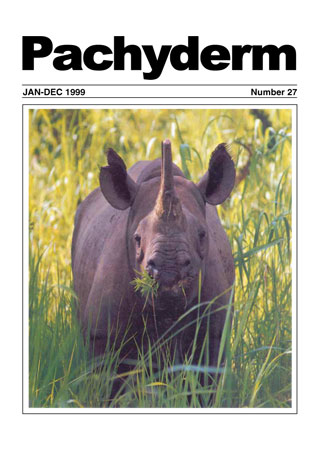Results of four years' satellite tracking of elephants in northern Cameroon
DOI:
https://doi.org/10.69649/pachyderm.v27i1.974Abstract
Three elephant subpopulations are found in Waza NP: one occupying the northern part of during the wet seasonand migrating northwards to Kalamaloue at the beginning of the dry season; one residing year within Waza NP year; and a third using the central and southern part of the Park in the dry season and migrating to the south at the beginning of the rainy season. Animals from the third group cause extensive damage to crops in the Mindif region during the wet season. In order to find more of about the movements and home ranges of these animals 2 cows were radio collared and monitored using satellite and VHF telemetry during 1994-1997. The Maga Dam and irrigated rice scheme developed in the late 1970s had changed the ecology of the Chari-Logone floodplain and hence the lives of the southern elephant group. Artifical reflooding begun in 1994 changed the ecology again. This monitoring programme saw a change in habitat, but the increased forage in the Park did not decrease the migration of elephants to the south. More work on this conflict situation is needed.
Downloads
Published
How to Cite
Issue
Section
License
Copyright (c) 1999 Iongh, Hans H. de, Martin N. Tchamba, Wil Tamis, Zelfde, Maarten Van't, Herbert H. T. Prins, Haes, Helias Udo de, Hans Bauer, Sylvain Tiawoun

This work is licensed under a Creative Commons Attribution-NonCommercial 4.0 International License.




